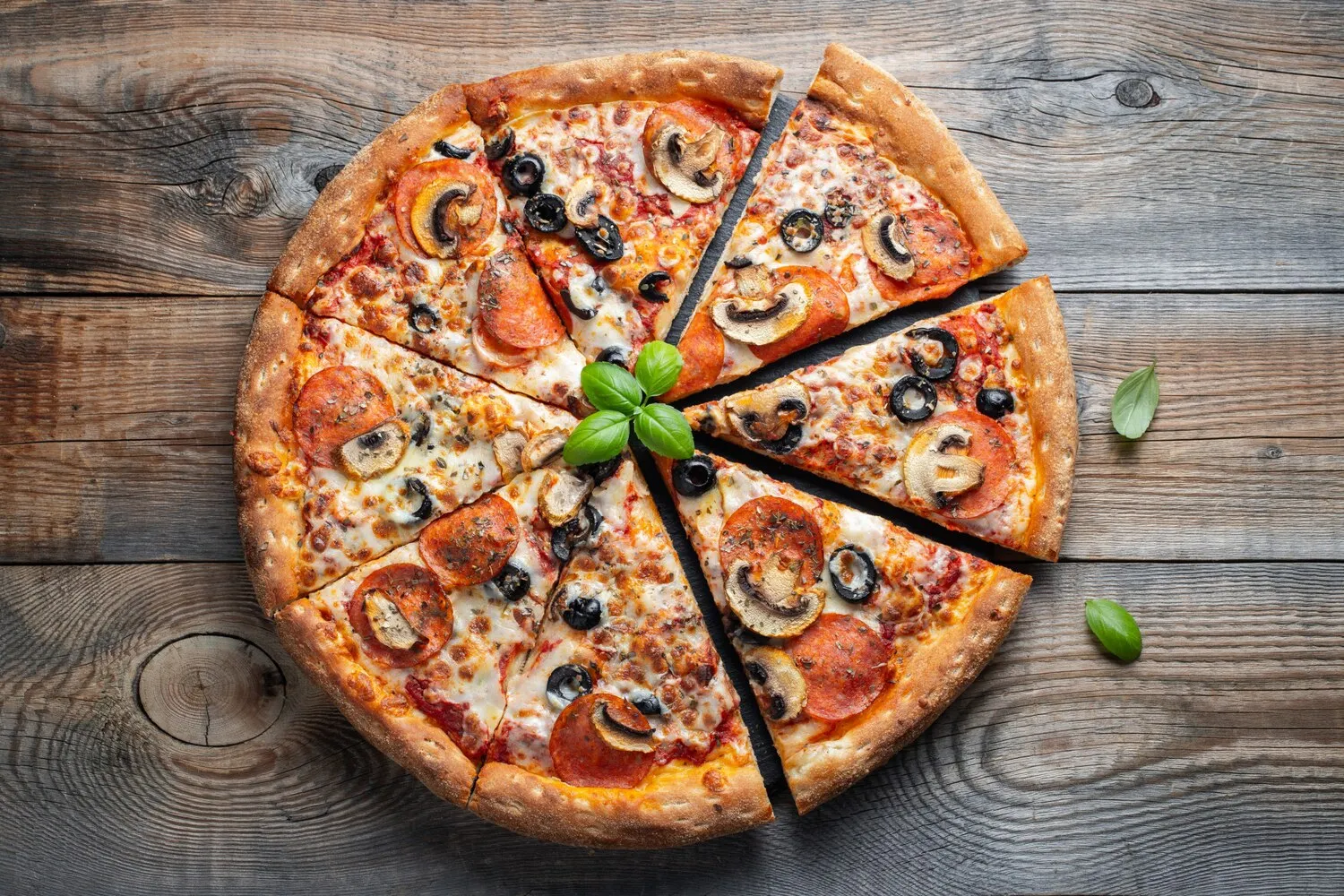
Pizza
Variety of pizza flavors available.
Nutrition Facts
* The % Daily Value (DV) tells you how much a nutrient in a serving of food contributes to a daily diet. 2,000 calories a day is used for general nutrition advice.
Pizza's origins can be traced back to ancient civilizations, with flatbreads topped with various ingredients being common in cultures throughout the Mediterranean. However, the modern pizza, with its signature tomato sauce and cheese, originated in Naples, Italy, in the 18th or early 19th century. It evolved from simple flatbreads sold on the streets to a dish enjoyed by all social classes.
Pizza has become a global phenomenon, transcending its Italian origins to become a ubiquitous and beloved food enjoyed across cultures worldwide. It's often associated with gatherings, celebrations, and casual meals.
Social Gathering Staple
Pizza is frequently served at parties, sporting events, and casual get-togethers, acting as a communal and shareable dish that fosters social interaction.
Regional Variations
Different regions have developed unique pizza styles, reflecting local ingredients and culinary preferences. Examples include New York-style pizza (thin crust, large slices), Chicago deep-dish pizza (thick crust, layered ingredients), and Detroit-style pizza (square shaped with crispy cheesy edges).
Symbol of Convenience
Pizza is readily available for delivery or takeout, making it a popular choice for quick and convenient meals.
Culinary Creativity
Pizza provides a canvas for culinary creativity, allowing chefs and home cooks alike to experiment with unconventional toppings and flavor combinations.
Pizza offers a delightful combination of flavors, primarily defined by the crust, tomato sauce, cheese, and toppings. The taste profile ranges from savory and tangy to spicy and sweet, depending on the specific ingredients used.
The foundational flavor of pizza comes from the dough, often leavened to create a light and airy or chewy texture. Tomato sauce provides acidity and sweetness, complemented by herbs like oregano and basil. Mozzarella cheese offers a creamy, mild flavor. Toppings provide the most significant flavor variations, with options ranging from pepperoni (spicy and savory), mushrooms (earthy and umami), onions (pungent and sweet), peppers (sweet or spicy), olives (briny), and sausage (savory and meaty). Different cheeses like parmesan, provolone, or ricotta add further flavor dimensions. Vegetarian options often incorporate vegetables like spinach, artichoke, and roasted vegetables.
Dough Preparation
Allowing the dough to rise properly is crucial for a light and airy crust. Proofing the yeast and kneading the dough adequately will result in a better texture.
Sauce Quality
Using high-quality tomato sauce or making your own from fresh tomatoes can significantly enhance the flavor of the pizza. Season the sauce appropriately with herbs and spices.
Cheese Selection
Fresh mozzarella is generally preferred for its creamy texture and mild flavor. However, other cheeses like provolone, parmesan, or a blend can add complexity.
Oven Temperature
Cooking the pizza at a high temperature (450-500°F) helps to create a crispy crust and melt the cheese evenly. Using a pizza stone or baking steel can also improve the crust's texture.
Topping Distribution
Avoid overloading the pizza with toppings, as this can make the crust soggy. Distribute the toppings evenly for consistent flavor in each bite.
Explore additional Pizza dishes and restaurants
Explore PizzaDiscover top dining spots and culinary experiences in São Carlos.
Explore São CarlosLearn more about the food culture, restaurant scene, and culinary heritage of Brazil.
Explore Brazil